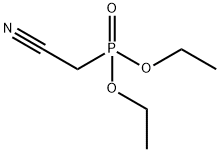N-Cyanoimido-S,S-dimethyl-dithiocarbonate
- CAS NO.:10191-60-3
- Empirical Formula: C4H6N2S2
- Molecular Weight: 146.23
- MDL number: MFCD00009825
- EINECS: 233-467-6
- SAFETY DATA SHEET (SDS)
- Update Date: 2025-09-25 17:15:13

What is N-Cyanoimido-S,S-dimethyl-dithiocarbonate?
Chemical properties
yellow crystalline powder
The Uses of N-Cyanoimido-S,S-dimethyl-dithiocarbonate
Dimethyl cyanodithioiminocarbonate has been used in the synthesis of 4-methylthiopyrazolo[1,5-a]-1,3,5-triazines, methylsulfanylpyrimidines, cyanoguanidines and N-aryl-6-methylsulfanyl-4-oxopyrimidine-5-carbonitriles. It has been also used in the synthesis of methylsulfanyl derivatives of azoloazines and azoloazoles.
Properties of N-Cyanoimido-S,S-dimethyl-dithiocarbonate
| Melting point: | 45-50 °C (lit.) |
| Boiling point: | 229.6±23.0 °C(Predicted) |
| Density | 1.298 (estimate) |
| refractive index | 1.5000 (estimate) |
| Flash point: | >230 °F |
| storage temp. | Inert atmosphere,Room Temperature |
| solubility | Slightly soluble in methanol. |
| pka | -5.10±0.50(Predicted) |
| form | solid |
| BRN | 635998 |
| CAS DataBase Reference | 10191-60-3(CAS DataBase Reference) |
| NIST Chemistry Reference | N-Cyano-s,s'-dimethyldithioimido carbonate(10191-60-3) |
| EPA Substance Registry System | Carbonimidodithioic acid, cyano-, dimethyl ester (10191-60-3) |
Safety information for N-Cyanoimido-S,S-dimethyl-dithiocarbonate
| Signal word | Danger |
| Pictogram(s) |
 Corrosion Corrosives GHS05  Exclamation Mark Irritant GHS07 |
| GHS Hazard Statements |
H302:Acute toxicity,oral H314:Skin corrosion/irritation |
| Precautionary Statement Codes |
P260:Do not breathe dust/fume/gas/mist/vapours/spray. P270:Do not eat, drink or smoke when using this product. P280:Wear protective gloves/protective clothing/eye protection/face protection. P301+P312:IF SWALLOWED: call a POISON CENTER or doctor/physician IF you feel unwell. P303+P361+P353:IF ON SKIN (or hair): Remove/Take off Immediately all contaminated clothing. Rinse SKIN with water/shower. P305+P351+P338:IF IN EYES: Rinse cautiously with water for several minutes. Remove contact lenses, if present and easy to do. Continuerinsing. |
Computed Descriptors for N-Cyanoimido-S,S-dimethyl-dithiocarbonate
| InChIKey | IULFXBLVJIPESI-UHFFFAOYSA-N |
N-Cyanoimido-S,S-dimethyl-dithiocarbonate manufacturer
G C Int'L
Maharashtra
Phone:91-7710026702
Whatsapp: 91-7710026702
product: Dimethyl N-cyanodithioiminocarbonate
New Products
Indole Methyl Resin tert-butyl 9-methoxy-3-azaspiro[5.5]undecane-3-carboxylate Boc-His(Boc)-OH 2-CTC Resin 4-Chloro-7-tosy1-7Hpyrrolo[2,3-d]pyrimidine 5,7-Dibromo-1H-indole 2,5-dichloro-N-hydroxy-4,6-dimethylpyridine-3-carboximidamide 2,2-Dimethoxy-7-azaspiro[3.5]nonane hydrochloride 4-chloromethyl-5-methyl-1,3-dioxol-2-one (DMDO-Cl) R-2-BENZYLOXY PROPIONIC ACID 1,1’-CARBONYLDIIMIDAZOLE 1,1’-CARBONYLDI (1,2-4 TRIAZOLE) N-METHYL INDAZOLE-3-CARBOXYLIC ACID 4-((2-hydroxyethyl)thio)benzoic acid 1-(TERT-BUTOXYCARBONYL)-2-PYRROLIDINONE Methyl 6-methylnicotinate 3-Pyridineacrylic acid tert-Butyl carbazate TETRAHYDRO-2H-PYRAN-3-OL 2-((4-morpholinophenylamino) (methylthio) methylene) malononitrile 3-(4-morpholinophenylamino)-5-amino-1H-pyrazole-4-carbonitrile 2,4-dihydroxybenzaldehyde 1,3-Diethyl-1,3-Diphenylurea Methyl 2-methylquinoline-6-carboxylateRelated products of tetrahydrofuran








You may like
-
 N-Cyanoimido-s,s-dimethyl-dithiocarbonate 97% CAS 10191-60-3View Details
N-Cyanoimido-s,s-dimethyl-dithiocarbonate 97% CAS 10191-60-3View Details
10191-60-3 -
 S,S'-Dimethyl N-Cyanodithioiminocarbonate CAS 10191-60-3View Details
S,S'-Dimethyl N-Cyanodithioiminocarbonate CAS 10191-60-3View Details
10191-60-3 -
 Dimethyl N-cyanodithioiminocarbonate 98% (GC) CAS 10191-60-3View Details
Dimethyl N-cyanodithioiminocarbonate 98% (GC) CAS 10191-60-3View Details
10191-60-3 -
 Dimethyl N-cyanodithioiminocarbonate CAS 10191-60-3View Details
Dimethyl N-cyanodithioiminocarbonate CAS 10191-60-3View Details
10191-60-3 -
 Pyridine 99.5% HPLC /UV SpectroscopyView Details
Pyridine 99.5% HPLC /UV SpectroscopyView Details
110-86-1 -
 Dibutyl PhthalateView Details
Dibutyl PhthalateView Details
84-74-2 -
 Imidazole Spot supply, competitive priceView Details
Imidazole Spot supply, competitive priceView Details
288-32-4 -
 Thiourea 99% ARView Details
Thiourea 99% ARView Details
62-56-6
Statement: All products displayed on this website are only used for non medical purposes such as industrial applications or scientific research, and cannot be used for clinical diagnosis or treatment of humans or animals. They are not medicinal or edible.
